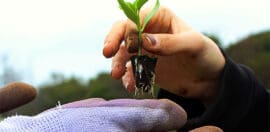Australia’s mega-rich don’t give enough: report

29 August 2022 at 4:40 pm
As top-end earnings rise, giving is not keeping pace, prompting questions around how to increase donations from high net worth individuals.
Australia lags behind its international peers on top-end giving, according to new research from the Centre for Social Impact (CSI).
An Australian-first report from CSI, titled High net wealth giving in Australia: a review of the evidence, reveals that while top-end wealth rose significantly in Australia in recent years, giving has not kept pace and has dropped behind the levels seen in other countries around the world.
See more: Labor promises to double giving, answering Philanthropy Australia’s call
Australia’s wealthiest are cashed-up
According to the report, the top 200 wealthiest people in Australia hold 3.8 per cent of the country’s wealth — $555 billion. The top five alone hold $143.28 billion.
Meanwhile, in 2020 a record $12.7 billion was donated or bequeathed to Australian charities and not for profits, up from $11.8 billion the previous year.
The top four donors in 2020/21 were the Paul Ramsay Foundation at $143 million, Minderoo Foundation at $109.7 million, Yajilarra Trust at $104.1 million and the Lowy Foundation at $69.8 million.
But there is “untapped potential in philanthropic giving”, the report states.
Most Australian income earners are not claiming tax deductible giving, and with only two percent of people in the top one per cent of income earners giving a higher proportion of their income than people in other income groups, there is scope for the wealthiest to give more.
Although the number of private ancillary funds (PAFs) in Australia has more than doubled between 2008/09 and 2018/19, from 822 to 1731, with distributions from PAFs also growing, they too have not kept pace with wealth growth.
Australian giving lags
The CSI report states that total giving accounts for 0.81 per cent of Australia’s GDP.
But in the UK, total giving is 0.96 per cent of GDP. In Canada, it’s one per cent; in New Zealand, it’s 1.84 per cent and in the United States, it’s 2.1 per cent.
In the United States, 90 per cent of people earning over $1 million make tax deductible donations, compared to only 55 per cent of Australians earning the same amount.
The report notes that while data is patchy, the 2022 Financial Review Philanthropy 50 List revealed a drop in philanthropic giving in 2022 of 2.3 per cent on the previous year.
Only 15 of the donors on that list are also on the AFR 2022 Top 200 Rich List.
Three donors on both lists donated 0.75 per cent or more of their wealth in 2020/21, which accounted for 10.8 per cent of donations from top donors.
A large proportion of the top 50 donors on the AFR’s 2022 Philanthropy 50 List are foundations of deceased people, with this group making 42 per cent of the total value of the top 50 donations.
The impact of increased giving
An increase in giving from Australia’s wealthiest people would have a significant impact on the charitable sector, according to the report, which notes that even “a slight increase in their giving capacity would dramatically boost the Australian charitable sector and could improve social and environmental outcomes across the country”.
The report noted a number of scenarios that could boost giving rates amongst the mega-wealthy and funnel more money to the charitable sector, including:
- A commitment by the 200 wealthiest Australians to the ‘Pledge 1 per cent’ model, which would generate $5.55 billion for the sector, an additional 3.2 per cent in revenue and 43.7 per cent in donations to ACNC charities.
- Extending the 1 per cent giving pledge to all households with net wealth greater than $50 million which is estimated to increase the pool of donations by between $7.9 billion and $8.5 billion.
- If the top 200 donated 1.46 per cent of their wealth, the highest rate of giving amongst the group matched to the Financial Review Philanthropy 50 List, it would add an additional $8.1 billion to the sector
- A pledge by the wealthiest 200 Australians to commit their annual wealth growth would raise $99.2 billion for the sector, almost eight times current annual donations.
The report also recommended the exploration of an inheritance tax for high net worth individuals with the proceeds funnelled to a fund open only to charities. The report calculates that a five per cent tax with a $10 million net worth threshold would raise between $2.3 and $3 billion annually.
Arminé Nalbandian, CEO of CSI, said charities play a crucial role in society which had been highlighted during the COVID-19 pandemic and recent natural disasters but were under strain to meet needs.
“If the top-200 wealthiest Australians donated one per cent of their wealth, it would generate $5.55 billion for the sector – around the estimates of what it would cost to provide subsidised dental care or access to affordable childcare for everyone,” she said.
Daniel Petre AO, tech leader, philanthropist and funder of the CSI research, said the low level of giving amongst Australia’s wealthiest people is “incredibly disappointing”.
“Australian society, and the Australians helping to build wealth for these individuals, deserve more,” he said.
Speaking to Pro Bono News, Michael Traill AM, Adjunct Professor at CSI UNSW and Chair of the Paul Ramsay Foundation, said there was capacity for PAFs to take a starring role in growing giving amongst high net worth individuals.
He said more needs to be done, based on the data in the report, to encourage “a more generous, more strategic culture of giving” in Australia.
Traill also singled out Philanthropy Australia’s blueprint for the sector, and charities minister Andrew Leigh’s support of that, as important factors in growing philanthropy in the country.
He said Australia had some “cultural shyness” around sharing stories of wealth and philanthropy that could also be holding some givers back.
“Getting more profile around those stories, I think, is an important part of it,” he said.
“I think it’s quite landmark research. While at one level it’s confronting, it also highlights an opportunity. And I’m an optimist on that. I do think that particularly the generation coming through are really interested in making a difference in a positive way.
“But it’s a yin and yang. The other side is that the data is pretty confronting. It shows that ultra high net worth giving is not much more than about a fifth to an eighth of what reasonable comparables look like in the UK and the US. And you have to look at that and say, gee, we like to think we could be doing better than that.”
Read the full report online.







